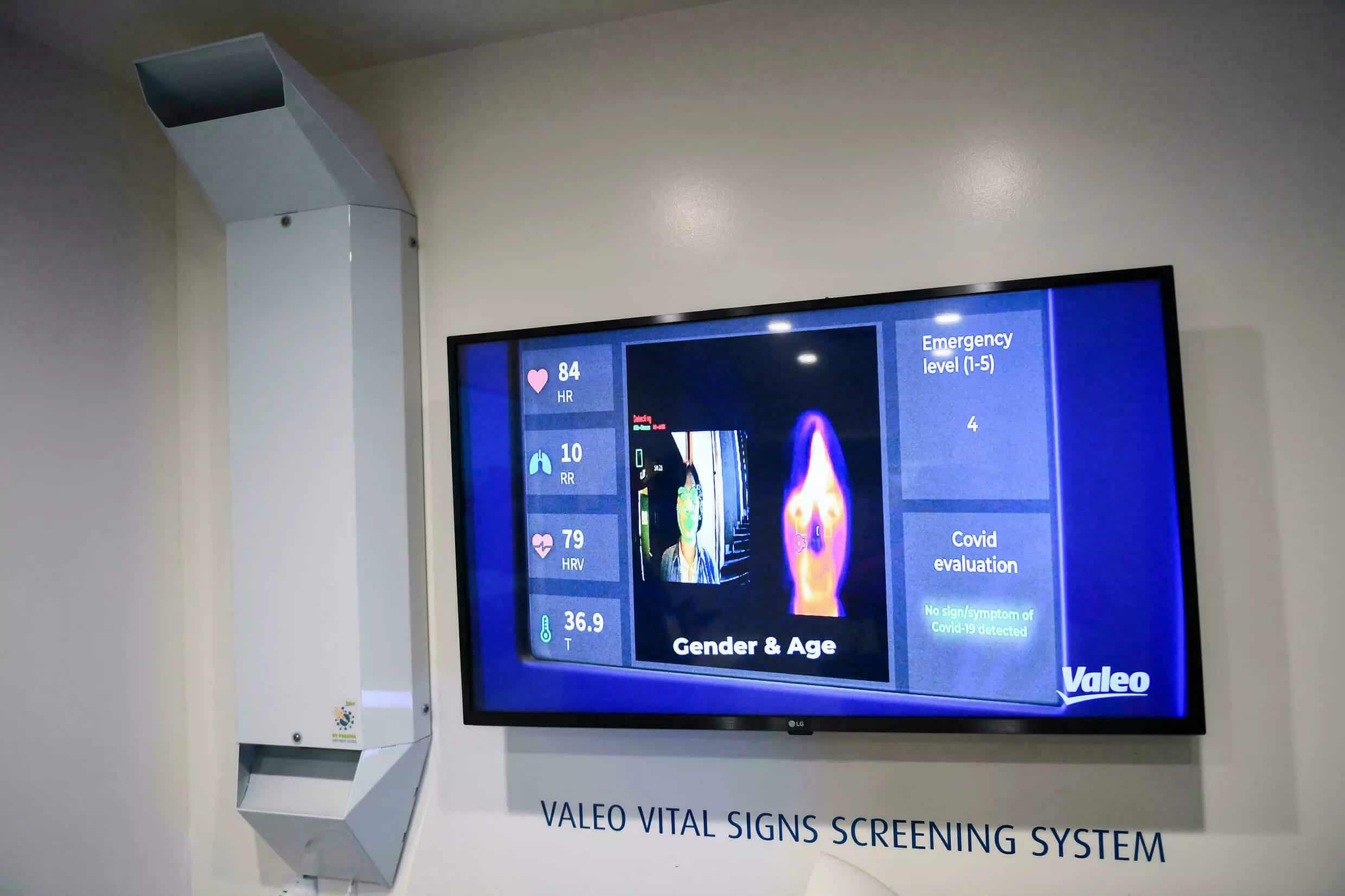With personal health a rising priority around the world, the auto industry is on the hunt for new gadgets and accessories to make the car cockpit feel safer for the driver and passengers.
The objective is to transform the automobile “into a sort of health cocoon,” Christophe Perillat, deputy chief executive of Valeo said at a press conference at the show held in Las Vegas.
The French auto supplier’s wares at CES include devices to monitor drivers’ attention and air filters and systems that allow personalized climate controls for passengers.
The company’s filtration system for cars and buses clears out more than 95 percent of viruses, including Covid-19.
CabinAir and Marelli also showcased car air purification systems that could be installed inside the cockpit or in a cup holder.
Another offering by Gentex is a sensor composed of nano-fibers capable of surveying the air and identifying contaminants.
The latest generation of technologies comes after earlier efforts focused initially on the trucking industry, where lengthy periods behind the wheel marred physical health, said Carla Bailo, head of the Center for Automotive Research.
After developing more ergonomic seats, auto suppliers have begun focusing on tools to help drivers get ahead of other health problems such as cardiovascular issues, and to maintain driver awareness.
Alerting parents
Some of the systems follow government requirements on autos.
The Italian startup Filo developed an alarm system for children’s car seats following a law in its home country intended to prevent kids from being left in the car on hot days.
The company was in Las Vegas to launch the technology for the United States, where there are dozens of casualties each year due to hyperthermia.
“With the hecticness of life, stress, et cetera, sadly, it happens more than we would like to admit that parents actually have on occasion lapsed… and they leave their children in the car,” said Rudolf Jantos, who works in marketing for Filo.
The company’s Bluetooth-based system will alert if a child remains in the seat when the driver moves away from the vehicle.
Other child-protection devices employ cameras, radars, vibration detection and weight sensors, said Mike Ramsay, a specialist in auto technology at consultancy Gartner.
Many of these products are not brand new, but are “becoming more practical in terms of costs and capabilities,” thanks to progress in algorithms and processors, Ramsay said.
These new devices have also been boosted by the rise of autonomous driving systems, which employ cameras and radars, said Jacques Aschenbroich, chief executive of Valeo.
“We had been focusing before more on the comfort of the seats and of the heating,” he said. “Now our clients also ask for more visual comfort and safety applications” based on these cameras and radars.
At CES, Bosch demonstrated its “Virtual Visor,” a transparent screen which detects the position of the driver’s eyes thanks to an internal camera and can darken only the portion of the windshield through which the sun would bother the driver, leaving the rest unobstructed.
“The key point is to use technology to really improve the customer experience, not to seem invasive,” Bailo said.
“There’s a fine line between ‘we’re trying to keep you safe, we’re trying to keep you healthy,’ and ‘we’re watching what you’re doing








